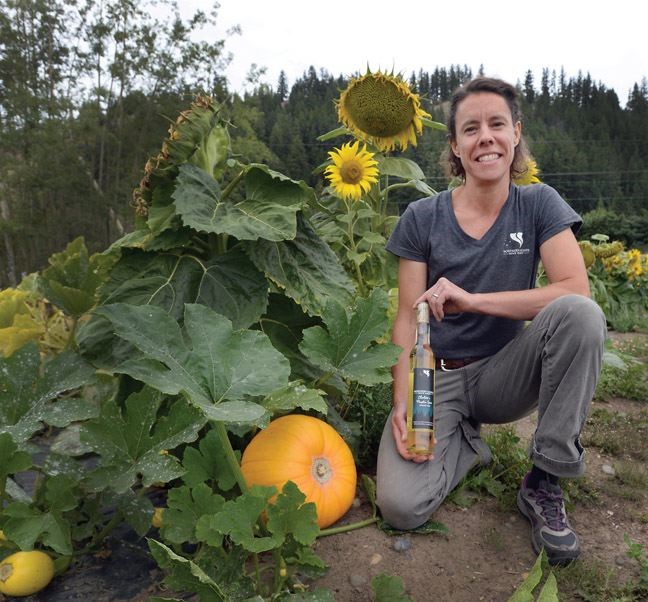For the first time, Prince George can raise a glass of pumpkin cheer made from its very own cheery pumpkins.
If there's one flavour, a single definitive food, that says "autumn" in Canada it is pumpkin. The bulbous orange squash grows well in almost every southern to mid-northern region of the country and all across the United States as well. It is a multi-million-dollar-commercial industry in Canada and even broader as a staple of personal gardens.
The city's highest profile agrifood facility within Prince George bounds, Northern Lights Estate Winery, grew more than 1,000 pounds of them last year. The flesh was frozen until the production room was ready for the special autumn sequence of spicy events that produced the inaugural batch of splashy pumpkin nectar.
Almost as soon as it was put on the winery's shelves (Sept. 26), it was gone.
"We honestly didn't think it would be quite this popular. There's been a huge positive response," said the winery's sales and service manager Wendy Stevens. "We made 100 cases and we are already down to about 15 cases, and we expect that will be gone in a matter of a few days."
On her website All About Pumpkins, Joy Barlogio of Jack Creek Farms wrote about the history of the ubiquitous gourd, as she had learned on their fifth-generation California pumpkin operation.
"Early native Americans roasted pumpkin strips over campfires and used them as a food source, long before the arrival of European explorers," said Barlogio. "Pumpkins helped the native Americans make it through long cold winters. They used the sweet flesh in numerous ways: roasted, baked, parched, boiled and dried. They ate pumpkin seeds and also used them as a medicine. The blossoms were added to stews. Dried pumpkin could be stored and ground into flour.
"They dried the shells and used them as bowls and containers to store grain, beans and seeds. I have read where they pounded and dried the pumpkin flesh into strips, and wove the strips into mats which they used for trading purposes.
"It is said that Columbus carried pumpkin seeds back with him to Europe," Barlogio said.
Celebrity nutrition commentator Julie Daniluk will be in Prince George next week for the Healthier You Expo. (Stay tuned to The Citizen for a full feature interview in the days ahead.) She has a personal soft spot for pumpkin.
"The first lick of cool air in North America immediately brings pumpkins to mind," Daniluk said. "Their orange hue is synonymous with fall and their rind simply begs to be carved. But consider that pumpkins are much more than obligatory autumn porch decoration or filling for a Thanksgiving or Christmas pie. Did you know they're one of the most nutritious foods on the planet? Pumpkins are nutritious and easy to digest."
In the hands of the wine makers at the winery it also formed a seasonal treat in a bottle. The label title is Charlotte's Pumpkin Spice and they've categorized it as a dessert wine.
"It's a novelty wine but its also a beloved family recipe," said Stevens. Charlotte is a real person, Charlotte Lapp (grandmother of principal owner Doug Bell) had this recipe for the pumpkin pie she would make each harvest season, and we took that and applied it to the winemaking process. This is what came of that. It is a fortified dessert wine, meaning the natural alcohol content was about 12 per cent from the fermentation process - we actually used a double fermentation process for this wine - then we topped that up to about 16.5 per cent. That just added the softness and creaminess to the finish. It really enhances the flavours."
Stevens said that the consumer could cellar Charlotte's Pumpkin Spice for up to one additional year but it was meant to be consumed as of now - easy as pie.


